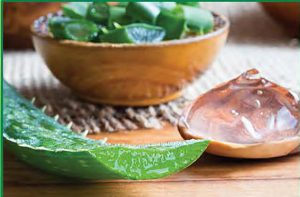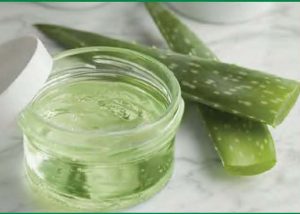
What is Aloe Vera and why is it so good?
When you get sunburnt because you’ve forgotten to slap on the sun cream then it may well be that you find yourself reaching for the soothing properties of aloe vera to soothe your burnt skin. It really does bring much relief during the healing process—but have you ever wondered what else aloe vera gel is useful for ?.
Joel Schlessinger MD is an American dermatologist and cosmetic surgeon.from Omaha tells us that “Aloe vera is a cactus-like plant known for its healing and medicinal properties its stems store water, creating a clear, gel-like substance in the leaves, which contains vitamins, antioxidants, minerals, and amino acids.The gel from aloe has been used throughout history to treat a variety of skin conditions, such as burns, psoriasis, cold sores and even frostbite.” -not too much of a problem here in Pattaya !.
The International Journal of Research and Medical Sciences tells us that each triangular leaf of the aloe vera plant is composed of three layers, with the innermost layer containing a clear gel that’s made up of 99 percent water and roughly 75 potentially active ingredients. The to keep the active ingredients active. When it comes to solving specific skin inner leaf gel is removed from the rind, either by machine or by hand and is cold-pressed issues, there’s not a lot of conclusive evidence on aloe vera’s efficacy, but “the biochemistry of aloe vera does have some anti-viral, anti-fungal, and cell-regenerative properties, so applying it to the skin in addition to other medications or remedies may prove to be helpful,” says Dr. Schlessinger.
What makes aloe vera gel so difficult to study is the fact that it contains so many promising ingredients that can improve the skin so it’s hard to hone in on the exact compounds and mechanisms that make it effective,

As well as soothing sunburn what are the other benefits of using aloe vera?
It soothes sunburn Aloe vera gel contains compounds called polysaccharides that encourage skin repair and new skin cell formation says Kenneth Mark MD who is a New York-based dermatologist and skin cancer surgeon. The gel also contains a pain reliever called carboxypeptidase, which may be why aloe vera is so soothing.
Relieves skin irritation and moisturises Inflammation underlies many skin conditions for example psoriasis, and eczema as it contains acemannan, that suppress inflammation. Also as aloe vera gel is mostly water, it helps to hydrate the skin without any greasy residue. It helps lock moisture into the skin, whilst acting as a glue to encourage the top layer of skin cells to stick together, ultimately smoothing and softening your skin.
Treats acne and cold sores Besides having serious antibacterial properties aloe vera gel also contains salicylic acid, which is an exfoliant that helps to unclog pores, making it especially helpful to deal with pimples, blackheads,also acting as an anti-inflammatory on the oil glands that cause acne.
Aloe vera is an antiseptic, containing agents known to help inhibit fungi, bacteria, and so helps speed up the healing process by creating antibodies the immune system can use to fight the cold sore virus.
Aloe helps to fade dark spots and slow signs of aging Aloe vera gel helps to suppress tyrosinase, the enzyme responsible for skin discoloration and so aids the prevention of dark spots, while the various antioxidants it contains (such as glutathione peroxide) can fade sun damage that’s already formed.
The salicylic acid aloe vera contains acts as an exfoliator helping to slough off dead skin cells and contains lignin, a substance which can enhance the effect of other ingredients on the skin. It also stimulates fibroblast activity which helps increase collagen production and elastin fibers that make the skin less wrinkled and more elastic. Meanwhile, zinc acts as an astringent to tighten pores, and antioxidants, such as vitamins C and E, help prevent the formation of free radicals (aka, molecules that can really damage your cells). How to choose the best aloe vera gel Purest aloe is always best, without anything added. If the percentage of aloe vera is low, that means it contains many other a dditives, such as thickeners, preservatives, colors, and fragrance.” These additional (and unnecessary) ingredients may make the aloe vera less effective. Although some preservation is necessary—hence why there’s no such thing as 100 percent aloe vera gel—try to find one that has the least number of ingredients, and the highest percentage of aloe vera.
Beware of a label saying “100 percent gel,” that just means that it’s pure gel, not pure aloe vera. Always make sure the label reads something like, “99 percent pure aloe vera,” or make sure that aloe vera is first on the ingredients list—the more ingredients that come before aloe on the list, the less aloe is in the product. Often these will include preservatives that extend shelf-life so if these are not present the aloe vera gel will have a shorter shelf-life, so always check the expiration date.
Try to avoid aloe vera gel that contains alcohol, fragrance or colour. Alcohol can be irritating to the skin, the same goes for fragrance. Also the gel should be clear —there’s no reason for it to be green.
